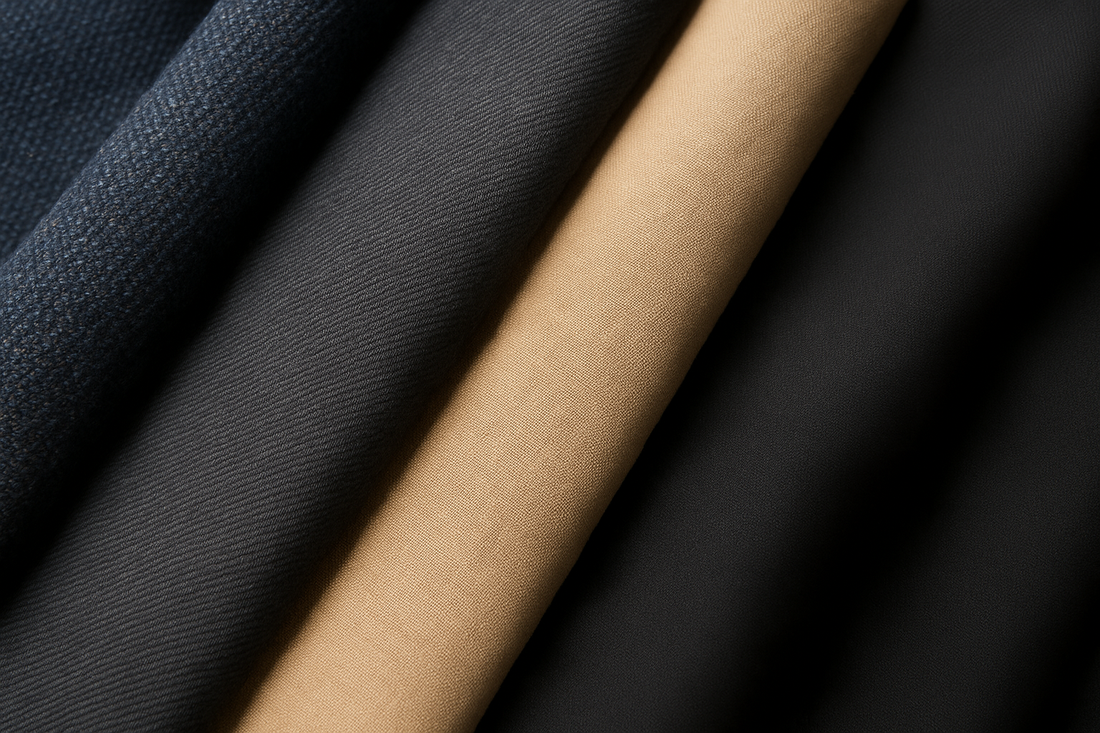
Woven Fabric: The Oldest and Most Versatile Textile
Woven fabric is one of the most fundamental and widely used materials in the fashion industry.
From ancient looms to today’s high-tech weaving machines, woven textiles have remained central to clothing, home goods, and industrial applications.
But what exactly is woven fabric, why is it considered the oldest fabric type, and why does it remain so versatile today?
What Is Woven Fabric?
Woven fabric refers to any textile made by interlacing two sets of yarns — the warp (vertical) and the weft (horizontal) — at right angles.
This structure creates a stable, grid-like fabric that can be produced in countless variations. Classic examples of woven fabrics include denim, poplin, twill, satin, chiffon, and canvas.
Why Woven Fabric Is the Oldest Textile Type
The concept of weaving dates back thousands of years. The earliest looms were simple wooden frames, yet even those primitive tools could interlace threads to form durable fabrics.
Because weaving only requires straight yarns and a basic loom, it is considered the oldest and most accessible form of textile production, predating knitting by centuries.
Why Woven Fabric Includes So Many Types
The interlacing method of woven fabric is extremely flexible. By changing:
- The weave structure (plain, twill, satin, jacquard),
- The yarn type (cotton, wool, silk, polyester, blends),
- The yarn density (high thread count or low),
manufacturers can create a vast range of woven fabrics, from the sheer lightness of chiffon to the rugged durability of denim. This is why woven fabric encompasses the widest variety of textile categories.
Characteristics and Advantages of Woven Fabric
- Durability & Abrasion Resistance: The crisscrossed yarns provide strength and surface stability, making woven fabric more resistant to wear compared to knits.
- Shape Retention: Woven fabric holds its structure well and does not stretch easily unless elastane or special techniques are added.
- Versatility: It can be produced in lightweight, breathable versions for summer shirts or heavy, insulating types for winter coats.
- Simple Production: Even traditional looms can create woven textiles, which is why they were historically dominant.
Woven vs. Knit Fabrics
The main difference lies in structure:
- Woven = interlaced warp and weft → stable, less stretchy, strong.
- Knit = looped yarns → naturally elastic, soft, flexible.
For shirts, trousers, blazers, or dresses that require crisp shapes, woven fabric is ideal. For T-shirts, hoodies, or leggings where stretch and softness matter, knits are the better choice.
Choosing a Woven Fabric Factory
Factories typically specialize: woven mills produce woven textiles, while knitting factories focus on knits. When choosing a woven fabric supplier, consider:
- Their experience with the type of fabric you need (e.g., shirting vs. denim).
- Quality control standards (thread count, shrinkage, finishing).
- Sourcing capabilities for sustainable or certified fabrics (e.g., GOTS or Oeko-Tex).
- Lead times and ability to handle small or large orders.
Applications of Woven Fabric
Woven fabric can be used in:
- Shirts, skirts, trousers, suits, blazers
- Dresses, coats, uniforms
- Home textiles like curtains and upholstery
- Technical textiles such as canvas or industrial fabrics
How Can Woven Fabric Become Stretchy?
Traditionally, woven fabric is non-stretch. However, with modern techniques:
- Adding elastane (spandex/lycra) yarns into the weave.
- Mechanical stretch finishing.
- Four-way stretch fabrics that use special weaving and elastane blends.
This allows woven fabrics to mimic some properties of knits while maintaining durability and shape.
Is Woven Fabric Expensive?
The price depends on:
- Fiber type (cotton, silk, wool, polyester).
- Weave complexity (jacquard costs more than plain weave).
- Thread count (higher density = higher price).
- Finishing processes (waterproofing, coating, softening).
Lightweight woven fabrics often use fine yarns and high thread counts for smoothness, while insulating woven fabrics use heavier yarns with looser or brushed weaves for warmth.
Conclusion
Woven fabric is the backbone of textile history and modern fashion alike. Its durability, wide variety, and adaptability make it indispensable for countless applications.
Whether you are sourcing shirting material or developing outerwear, understanding woven fabrics helps you make smarter production decisions.
FAQs About Woven Fabric
1. What is woven fabric?
It is fabric made by interlacing warp and weft yarns at right angles.
2. Why is woven fabric considered the oldest textile?
Because weaving on looms dates back thousands of years, long before knitting was invented.
3. What makes woven fabric durable?
Its interlaced yarn structure gives it strength and abrasion resistance.
4. Can woven fabric stretch?
Not naturally, but adding elastane or using modern weaving techniques can create stretch wovens.
5. What types of clothes use woven fabric?
Shirts, skirts, trousers, blazers, dresses, and coats.
6. Is woven fabric more expensive than knits?
It depends on fiber, thread count, weave, and finishing, but high-quality woven fabrics can be pricier.

